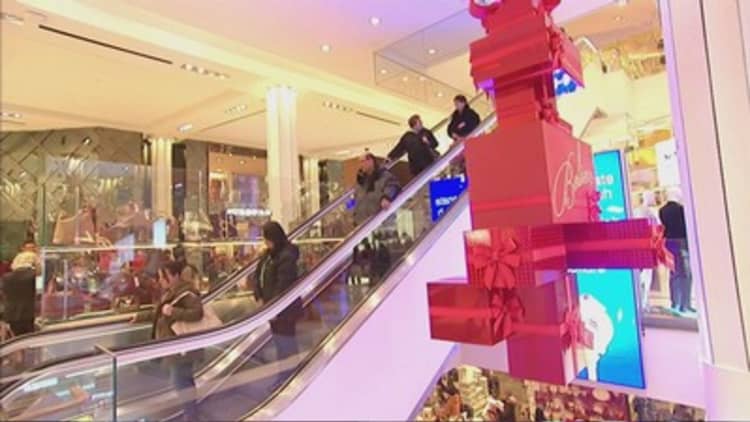Turning the screen to make the text bigger. Zooming in so it's easier to fill out the required data fields. Zooming back out to see what additional information is needed. Battling the well-intentioned autocorrect setting as you try to enter your name and shipping address.
For all the convenience associated with online shopping, the retail industry has yet to solve one of its biggest headaches: Making it simple for consumers to complete a transaction on a mobile phone.
It appears, however, that they're starting to make some progress.
According to Deloitte's holiday spending survey, released Tuesday, 41 percent of shoppers who will use a smartphone this season said they will use it to make a purchase — up 6 percentage points over last year.
Although that still falls short of the 50 percent who plan to use a smartphone to shop or browse, it's gaining ground over that metric, which was flat with last year's findings.
"That to me is an important trend," said Rod Sides, leader of the retail and distribution practice at Deloitte.
Sides attributed the momentum in mobile buying to retailers making these smaller sites easier to navigate, and pivoting away from their previous strategy of simply shrinking down their desktop pages.
He cited larger screen sizes as another contributor — a finding that was recently echoed in a study by Kount. The fraud prevention firm's research has found that the average purchase on an iPad is nearly double that of the iPhone.
But while consumers appear to be getting more comfortable transacting on mobile devices, there remains a huge gap between the amount of time and dollars spent on them.
Although mobile sales increased 27.2 percent last holiday season, they still accounted for less than a quarter of overall online sales, according to IBM Digital Analytics Benchmark. In contrast, mobile traffic increased 25.5 percent, reaching 45 percent of all online traffic.
It's a divide that Steve Barr, U.S. retail and consumer leader at PricewaterhouseCoopers, sees continuing this holiday.
"Mobile is about information and receiving discounts, [but] it's still not the tool for purchase," Barr said.
Deloitte's study backs up his thesis. Among the 78 percent of respondents who said they will use their phone for holiday shopping, 60 percent said they will do so to get store locations. Checking and comparing prices was the second most popular reason, at 55 percent.

Regardless of how shoppers use their mobile phones this holiday, the stakes are high for retailers to meet their needs both digitally and in-store. According to Deloitte, consumers who both visit stores and use the Web will spend 75 percent more than those who strictly shop at bricks-and-mortar locations.
Overall, Deloitte's survey found that shoppers plan to spend on average 12.5 percent more this holiday. That includes an average $976 on nongifts — up 16 percent compared to 2014 — and $487 on gifts — an increase of 6 percent.
In line with earlier findings from the National Retail Federation, Deloitte also said that shoppers will spend more on themselves this holiday. The consulting firm's study found that 50 percent of consumers plan to pick up items for themselves while they're out shopping, up from 43 percent last year.
"If you go back and you look at where we were in the Great Recession, people didn't spend on themselves," Sides said. "[Now] they feel like they can splurge on themselves."
Last month, Deloitte predicted that retail sales excluding motor vehicles and gasoline would rise between 3.5 and 4 percent from November through January — a growth rate below last year's 5.2 percent gain.





